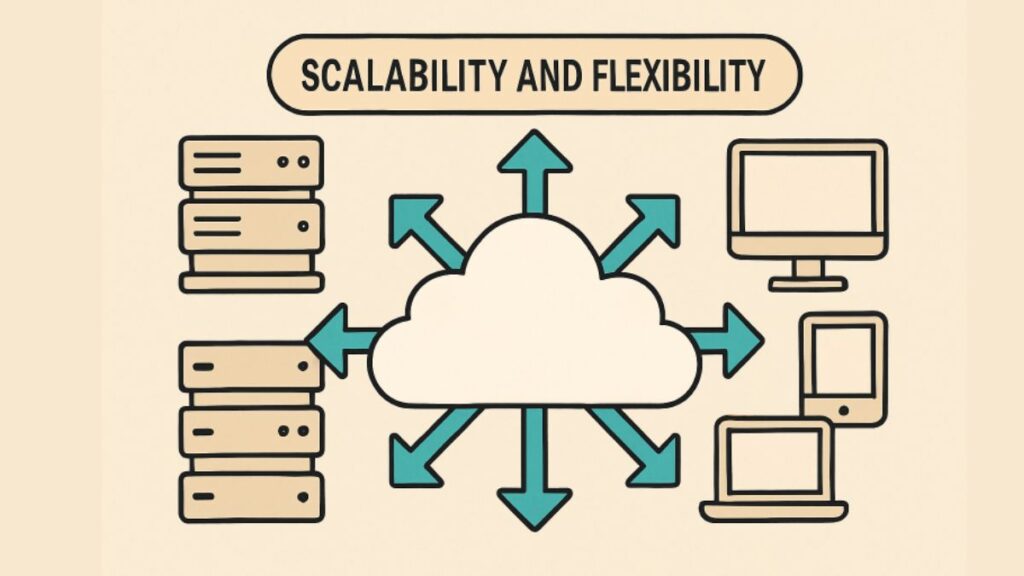Introduction
Modern enterprises increasingly recognize the strategic value of cloud solutions to accelerate their digital transformation efforts. As organizations face evolving customer demands and unpredictable market conditions, the flexibility offered by cloud computing has become indispensable. Cloud platforms enable businesses to deploy applications faster, automate routine tasks, and optimize IT budgets—all while supporting remote and hybrid work environments.
The partnership with an experienced cloud provider, such as Arctic IT, is key to unlocking these benefits. Expert guidance ensures companies can tailor their cloud strategies to current needs and future-proof their digital infrastructure, avoiding common pitfalls and maximizing return on investment.
The scalability and security of cloud solutions support innovation while reducing the complexity of IT operations. Organizations are no longer bound by the constraints of on-premises equipment, allowing for seamless integration of new technologies and cost-effective expansion into new markets.
As cloud platforms evolve, AI, machine learning, and automated analytics are becoming standard features, driving efficiency gains across supply chain management, customer relationship management, and workforce collaboration.
Scalability and Flexibility: Meeting Dynamic Business Needs
Cloud computing’s ability to scale resources on demand transforms how businesses plan and operate. Companies can increase server capacity during peak periods and scale back when demand drops, avoiding the costs and inefficiencies of over-provisioning. This dynamic elasticity means businesses can respond swiftly to unexpected growth, emerging market opportunities, or crises without sacrificing service quality.
The agile nature of cloud platforms allows companies to experiment with new digital services, run short-term campaigns, or deploy new applications globally with minimal upfront investment. This increased agility has become a major driver for organizations aiming to stay ahead in rapidly changing sectors, from ecommerce to financial services. According to Forbes, businesses leveraging scalable cloud infrastructure often unlock faster time to market and greater operational resilience.
Integrating AI and Machine Learning for Enhanced Operations
The synergy of artificial intelligence (AI) and machine learning (ML) with cloud computing revolutionizes enterprise operations. AI-driven analytics help organizations mine vast datasets for actionable insights—identifying patterns, predicting market behavior, and enabling proactive business decisions. Machine learning engines automate complex workflows, reduce human error, and enable personalized customer experiences at scale.
Cloud providers now deliver robust AI and ML tools as part of their service offerings, often requiring minimal setup or prior expertise. This democratization of advanced analytics empowers all levels of the business to make data-driven decisions. As highlighted in Harvard Business Review, companies utilizing cloud-based AI solutions can optimize resource allocation, identify cost-saving opportunities, or predict infrastructure needs in real time.
Adopting Hybrid and Multi-Cloud Strategies
As digital ecosystems become complex, organizations increasingly adopt hybrid and multi-cloud strategies to remain flexible and mitigate risk. Hybrid cloud allows businesses to seamlessly integrate private cloud resources with public platforms, capitalizing on the strengths of both environments. Multi-cloud approaches distribute workloads among multiple vendors, optimizing performance, improving redundancy, and avoiding dependency on a single provider.
This diversification is essential for compliance, data sovereignty, and business continuity. It allows companies to select the best environment for each workload, balance cost structures, and rapidly pivot in response to technology advances or regulatory changes. Leading analysts from Gartner note that adopting hybrid and multi-cloud models is expected to accelerate, as organizations seek both innovation and risk mitigation in equal measure.
Prioritizing Energy Efficiency and Sustainability
In response to growing environmental concerns, cloud service providers heavily invest in sustainability initiatives. Modern data centers leverage advanced cooling and power management technologies, shift to renewable energy sources, and optimize server utilization rates. These innovations reduce environmental impact, trim operational expenses, and contribute to corporate social responsibility goals.
Enterprises choosing eco-conscious providers not only reduce their carbon footprint but also benefit from long-term cost savings and enhanced brand reputation. In fact, adopting greener IT strategies is now considered a core element of robust corporate governance and a key differentiator in markets where customers value sustainability.
Enhancing Security in Cloud Environments
With the increasing reliance on digital assets, securing sensitive data remains a top priority in the cloud. Major cloud providers continuously update their security protocols, employing advanced encryption, robust multi-factor authentication, and sophisticated threat detection methods to safeguard data at rest and in transit.
Compliance with industry regulations and data privacy standards is integral to cloud strategy. Regular audits, vulnerability assessments, and adherence to global security frameworks help enterprises preserve trust and avoid costly breaches. Guidance from seasoned security professionals is invaluable in ensuring cloud deployments align with technical and regulatory requirements.
Cost Optimization Through Cloud Adoption
The prospect of significant cost savings often drives cloud transformation. The flexible pay-as-you-go model allows businesses to align spending with actual usage, avoiding capital expenditures on hardware and software. Cloud solutions simplify IT management, reducing the resource burden associated with maintenance, upgrades, and security.
Cloud adoption enables tailored budget forecasting and smarter resource allocation for organizations operating in highly variable or seasonal markets. CFOs can easily monitor and control IT spend, while technical leaders have the agility to deploy resources where they generate the greatest return.
Future Outlook: Continuous Innovation in Cloud Computing
The cloud computing ecosystem continues to evolve, with trends such as edge computing and serverless architectures unlocking new opportunities for efficiency and growth. These emerging technologies enable faster data processing, reduced latency, and even more granular scaling, empowering organizations to drive innovation, improve customer experiences, and launch new digital products with unprecedented speed.
Organizations that continuously monitor advancements in cloud technology and proactively experiment with new capabilities will secure competitive advantages. As businesses transition to data-centric operations, the strategic use of cloud services will remain foundational to digital resiliency and future-ready enterprise success.






